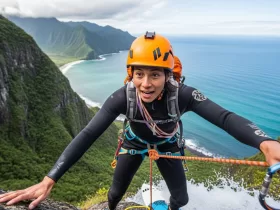Let’s give him a name, Marcos. He was all set to skydive at 28 years old, fully equipped with a GoPro on his helmet. Everything was in place. The breathtaking scenery was ready, the jump was booked, and he was bursting with energy. But something did go wrong. This time, it wasn’t the parachute that was the problem. His ankle gave out. A sudden twist while landing sent him straight to the hospital.
Marcos thought he was covered under travel insurance. However, after calling the company, the cold response, “Your policy doesn’t cover injuries from extreme sports,” left him feeling hopeless. The adrenaline rush wore off quickly, but the debt? That lingered on for months.
This is the part of the article where I try to save you from ending up in a similar scenario. Adventure trips are meant to be exciting, but they shouldn’t be ruined by hidden medical bills.
What is considered an adventure sport?
Some people assume that the term “adventure sport” covers only extreme activities such as skydiving or climbing Mount Everest. For many insurers, that covers a wider range of activities which seem to lack risk. Surfing, diving, skiing, snowboarding, mountain biking, certain altitude hiking, kayaking, rafting, paragliding, and even horseback riding in specific regions.
What matters most is how your insurance regards your profession. Should an activity comes with a risk involving a physical challenge, speed, elevation, depth or any form of unpredictable conditions, you are most likely to incur additional insurance charges.
Even with a helmet on or when you’re guided by an experienced professional, many of these activities won’t be covered by standard travel insurance.
Normal insurance is not enough if your trip includes physical risk.
When any unforeseen incident occurs within the scope of your trip, you might think your insurance can help you out. Unfortunately, only paying for medical care isn’t always guaranteed to cover expenses resulting from an injury sustained while surfing, skiing, or hiking in so-called risky areas.
The issue arises from the details that most people don’t bother looking into. “Dangerous sporting activities” is too often left without proper definition, including critical terms such as: “remote area,” “non recreational sports,” or “unnecessary risk.”
Without adventure sports insurance, most people will unfortunately have to bear the brunt of the consequences themselves.
And when the time comes, it doesn’t make sense if you paid too little for insurance. Everything will be gone. Because insurance that doesn’t pay out when the time calls for it isn’t insurance. It is a promise that is broken.
What real adventure sports insurance does cover
A good specialized insurance policy enables you to move freely. If something goes wrong, they will take care of you. If you need a ride, they will do it. If the situation is serious, they will bring you home. But they also cover you for medication, tests, or help in a language you understand.
The coverages that should not be missing are:
- Medical attention if you have an accident while practicing activity.
- Hospitalization in case of serious injury.
- Rescue in mountains or areas with difficult access.
- Medical evacuation if you are far from a health center.
- Post-accident surgery or rehabilitation.
- Transport to the country of origin if you cannot continue traveling.
- Liability coverage, if you harm someone else.
- 24/7 support in any language so you do not need to rely on Google Translate when you need help the most.
All of this, of course, depends on the insurance you choose. But a plan that calls itself “adventure” must be prepared to respond to these scenarios. If it doesn’t include it, you are buying travel insurance, not action insurance.





























